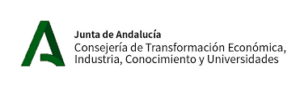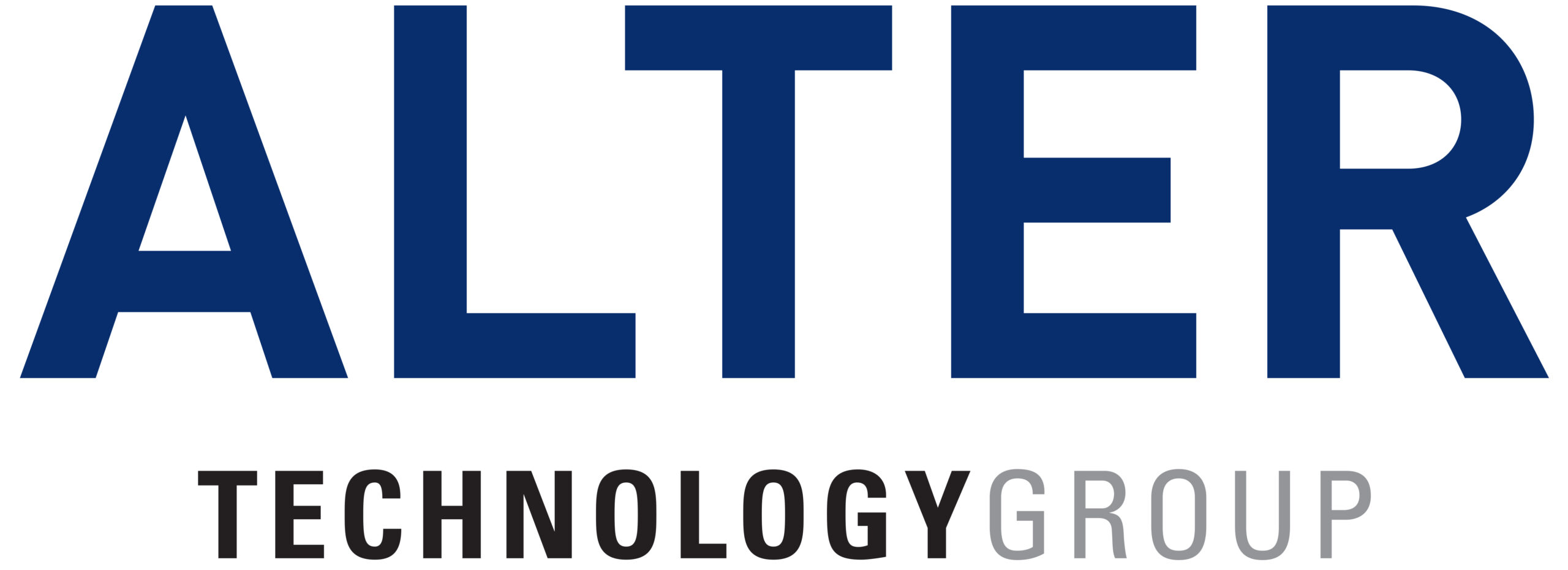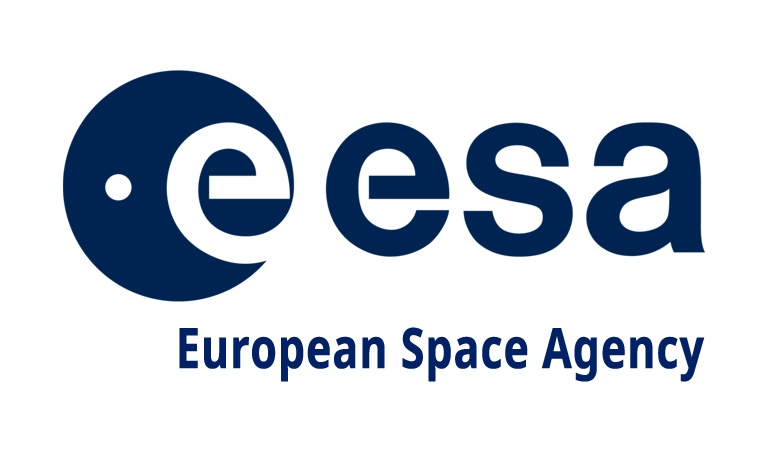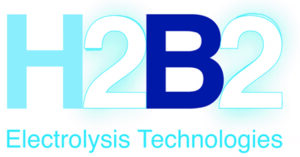
Financial source: Junta de Andalucía Code: US-1263142
|
Plasma technology for the development of a new generation of hole transport layers in perovskite solar cellsPrincipal Investigator: Juan Ramón Sánchez Valencia Period: Research team: Ángel Barranco Quero, Juan Pedro Espinós Manzorro, Cristina Rojas Ruiz, José Cotrino Bautista |
Third generation solar cells (SCs) are nanotechnological devices that directly convert sunlight into electricity and represent the paradigm of research in renewable energies, the use of which will depend on the energy future of the planet. Recently, a particular example of SCs containing an organometallic halide perovskite as a light absorber have attracted the attention of the scientific community due, above all, to their high efficiency and low cost. These characteristics make them a promising alternative to current cells (Si and chalcogenides). However, for the commercial realization of perovskite cells, it is necessary to achieve greater stability, durability and reproducibility. The most important advances have been achieved due to the intense research on the elements that integrate a SC: electron transport layer, perovskite and hole transport layer. Specifically, this latter element has been crucial for its evolution after the implementation of solid state hole conductors.
PlasmaCells pursuits to address for the first time the synthesis of a new family of hole transporters by vacuum and plasma techniques. These methodologies are industrially scalable and have great advantages over solution methodologies (the most used), among which stand out: their high versatility, composition and microstructural control, low cost, are environmental friendly since they do not require solvents, do not produce polluting emissions and are compatible with current semiconductor technology.
The main objective of PlasmaCells is the integration of these new plasma-processed hole transport layers into perovskite SCs. The importance of the project is based on recent results obtained by the Principal Investigator (PI) that demonstrate that the proposed approach may be one of the most promising ways to increase the stability, durability and reproducibility of these SCs, which currently represent the bottleneck that prevents their industrialization. It should be noted that there is no example in the literature of this synthetic approach for the development of hole transporters. It is expected that this opportunity will allow to demonstrate the advantages and versatility of this innovative methodology in a high-impact field, which is framed within the priority areas RIS3 Andalucía and in the PAIDI 2020 of sustainable growth, energy efficiency and renewable energies.

Financial source: Junta de Andalucía Code: P18-RT-2641 Acronym: TOLERANCE |
Smart thermochromic coatings for smart windows and environmental controlPrincipal Investigator: Ángel Barranco Quero y Alberto Palmero Acebedo Period: Research team: Ana María Gómez Ramírez, Juan Ramón Sánchez Valencia, Víctor J. Rico Gavira, Rafael Álvarez Molina, Francisco Yubero Valencia, Juan Pedro Espinós Manzorro, Ana Isabel Borrás Martos, Agustín R. González-Elipe |
The International Energy Agency considers that the systematic use of autonomous procedures for environmental control is one of the best technological approaches to minimize the energy employed to cool down buildings and other urban structures (it represents more than 40% of the global energy use in developed countries, much above the use in transportation, for instance), thus reducing the environmental impact and improving human comfort. TOLERANCE aims at introducing and developing a technology based on thermochromic materials in Andalusia as a smart and autonomous element to control the penetration of solar radiation in buildings. This project focusses on various applications such as smart windows in buildings and urban furniture, improvement of sanitary water systems or environmental control in greenhouses. While at low temperatures, a thermochromic coating transmits most solar spectrum, it selectively filters out the infrared region of this spectrum at high temperatures. In this research, TOLERANCE proposes several R+D actions to grow thin films with composition VO2, a thermochromic oxide with transition temperature near room temperature, on glass and plastic by means of industrial scalable techniques, as well as its nanostructuration, doping and integration in multilayer systems to improve its features and multifunctional properties.
  |
Atmospheric Pressure Gliding-arc Plasmas for the Sustainable Production of Ammonia and Hydrogen (ARCPLAS)PIs: Ana M Gómez Ramírez, José Cotrino Bautista (Jan-2020/May-2023) |
|
Financial source: European Union Code:US‐1380977 Acronym: ARCPLAS |
Research team: Javier Brey Sánchez, Juan Rodríguez Archilla, Jesús Cuevas Maraver, Alberto Palmero Acevedo, Rafael Álvarez Molina |
This project aims at developing gas chemical transformation processes through atmospheric pressure plasma technologies that use electricity as a direct energy vector. Specifically, the objective is to fine-tune a Plasma Atmospheric Gliding Arc Reactor (PAAD) to induce two processes of great industrial and environmental impact, such as the synthesis of ammonia (NH3) and the production of hydrogen (H2) from hydrocarbons and alcohols.
 |
PIs: Ana María Gómez Ramírez, Manuel Oliva Ramírez (Dec-2022/Nov-2024) |
Read more …
RENOVACO2 aims at developing atmospheric plasma technologies to induce chemical processes that are currently carried out through catalytic techniques (i.e., at high pressures and temperatures, using harmful and non-recyclable catalysts). Specifically, RENOVACO2 pursues the development of a Dielectric Barrier Discharge Reactor (DBD) to induce two processes of great environmental impact, such as the splitting of the CO2 molecule and its revalorization in high-valued products. RENOVACO2 proposes, in a first stage, to develop the DBD technology through the design, construction, modelling, and commissioning of a disruptive new plasma reactor. In a second stage, it is proposed to build a second prototype reactor powered with renewable energy sources through the connection to a solar panel.
|
Financial source: Ministerio de Ciencia e Innovación. Agencia Estatal de Investigación. Proyectos de I+D+i Retos Investigación Code: TED2021-130124A-I00 Acronym: RENOVACO2 |
Research team: Alberto Palmero Acebedo, María del Carmen García Martínez, Agustín R. González-Elipe, José Cotrino Bautista, Rafael Álvarez Molina. Work team: Guillermo Regodón Harkness, Antonio Márquez Alcaide, Servando Marín Meana |
 |
Atmospheric Pressure Glinding-Arc Plasmas for Sustainable Applications (FIREBOW)
PI: Ana María Gómez Ramírez (Sept-2021/Aug-2024) |
Read more …
The need to promote an effective transition from an economy based on the intensive use of fossil fuels to another where the development criteria are based on sustainable processes that do not involve the generation of CO2 makes it necessary to develop new processes using the electricity generated from renewable sources as primary source of energy. This project, aims at developing atmospheric plasma technologies to induce chemical processes that are currently carried out through catalytic techniques. Specifically, FIREBOW pursues the development of a Gliding Arc Atmospheric Plasma reactor (GA) to induce three processes: (i) the synthesis of ammonia (NH3), (i) the production of hydrogen (H2) from NH3, and (iii) the decontamination of water. Both the experimental and theoretical characterization of the reactor, the latter carried out using computational methods, will be crucial for its correct operation and for the optimization of the proposed processes.
| Financial source: Ministerio de Ciencia e Innovación. Agencia Estatal de Investigación. Proyectos de I+D+i Retos Investigación
Code: PID2020-114270RA-I00 Acronym: FIREBOW |
Research team: José Cotrino Bautista, Maria del Carmen García Martínez, Antonio Rodero Serrano, José Javier Brey Sánchez
Work team: Paula de Navascués, Manuel Oliva Ramírez |
 |
Plasma technology for efficient and DURAble waterproof perovskite SOLar cells (DuraSol) PIs: Juan Ramón Sánchez Valencia / Maria del Carmen López Santos (June-2020/May-2023) |
Read more …
Solar cells – devices that transform sunlight into electricity – are of vital interest for the sustainable future of the planet. During the last years and aware of this fact, the scientific community has made a great effort to improve the efficiency of these devices. A particular example of a solar cell that contains an organometallic halide perovskite as light absorber has focused the attention of the scientific community during the last decade due, above all, to its high efficiency and low cost. This solar cell technology is a promising alternative to currently existing ones (based on Si and chalcogenides), although they face a scientific and technological challenge that has not been solved in 10 years since its discovery: for the commercial realization of the perovskite cells possible, they need to achieve higher stability, durability and reproducibility. The main problem lies in the high sensitivity of these perovskites to oxygen and environmental humidity, which produce a rapid degradation of the cell’s behaviour in an extremely short time, making commercialization unfeasible.
DuraSol seeks to address this great scientific and technological challenge by manufacturing cell components using vacuum and plasma technology. These methodologies are industrially scalable and present great advantages over solution methods (the most used), among which are: their high versatility, control of composition and microstructure, low cost, environmentally friendly since they do not require solvents, do not produce pollutant emissions and are compatible with current semiconductor technology.
The main objective of DuraSol is the fabrication of waterproof perovskite solar cells by integrating components manufactured by vacuum and plasma methodologies in the form of thin films and nanostructures, which act as hydrophobic sealants. The viability of DuraSol is based on recent results that demonstrate that plasma-assisted synthesis of different components of the solar cell can be one of the most promising ways to increase its stability and durability, which is today the bottleneck that prevents their commercialization. It is worth to highlight that there is no example in the literature about this synthetic approach, and this opportunity is expected to demonstrate the advantages and versatility of this innovative methodology in a field of very high impact. The research proposed in DuraSol falls within the priority areas of the European Union Horizon 2021-2027 program and responds to several of the challenges proposed in this call for “Energía segura, eficiente y limpia” (Challenge 3) and “Cambio climático y utilización de recursos y materias primas” (Challenge 5).
|
Financial source: Ministerio de Ciencia e Innovación Code: PID2019-109603RA-I00 Acronym: DuraSol |
Research team: Juan Pedro Espinós Manzorro Work team: Xabier García Casas, Víctor López Flores, Javier Castillo Seoane |
|
|
Caracterización de materiales, componentes y dispositivos para aplicaciones espacialesFinancial source: ALTER TECHNOLOGIES TUV NORD (technological support contract) PI: Angel Barranco (Nov-2022 / ) |
|
|
Charging Effects Mitigation Using Innovative MaterialsFinancial source: European Space Agency ESA (contract No. 40001139513/22/NL/CRS) Consortium: Institute of Materials Science of Seville, Institute of Materials Science of Madrid, ALTER TECHNOOGY TÜV NORD, DHV Technology, Research Centre of Cantabria (CTC). PIs (NToSP): Ángel Barranco (project manager), Francisco J. Aparicio (technical manager) (Oct-2022 / ) |
|
|
Assessing Pseudo-hermeticity on COST with Plastic Encapsulated MaterialsFinancial source: European Space Agency ESA (contract No. 4000135494/21/NL/GLC/ov) Consortium: Institute of Materials Science of Seville, ALTER TECHNOLOGY TÜV NORD (SP), ALTER TECHNOOGY TÜV NORD (UK) PIs (NToSP): Ángel Barranco (project manager), Francisco J. Aparicio (technical manager) (Oct-2021 / Dec-2023) |
|
|
Manufacture, characterization and efficiency of electrocatalysts for AEM water electrolyzersFinancial source: H2B2 Electrolysis Technologies, S.L. within ECLOSION project from I+D+i “Líneas Estratégicas” MISIONES, Ministerio de Ciencia e Innovación. PI: Francisco Yubero (Sept-2021/Nov-2024) |




